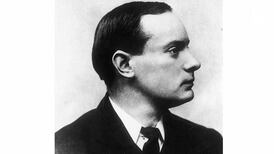Whoever he was – and there seems to be some doubt on the matter – the man for whom Dublin’s Drury Street was named is commemorated in English only.
According to street signs, the Irish name is “An Bóther Beag”, making what has become one of the trendiest thoroughfares in the city officially a boreen.
This is in keeping with the “Drury Lane” it used to be, before 19th-century widening. As for an older name, “Little Boater Lane” - seen on a 1673 map – that was surely a mere corruption (and a tautological one too) of bóthar.
The person it’s presumed to be named for is Sir William Drury (1527-1579), an English statesman and soldier who came to Ireland only late in life.
What’s with the name? – Frank McNally on O’Doul, O’Day, and other nominal oddities of Irish America
Far away, so close – Fionnuala Ward on measuring distance
The Derry man who influenced George Washington and Alexander Hamilton - Brian Maye on Hercules Mulligan
The BBC’s national question: Frank McNally on Edna O’Brien and ‘the North of Ireland’
He was first a “severe but effective” president of Munster – then between Desmond Rebellions – in 1576. After that, he became Lord Justice of Ireland, in which role he lasted barely a year.
But the thing he is best remembered for doing may suggest a certain wisdom in the Irish version of street signs refusing to honour him.
In 1579, at Kilmallock, Drury personally questioned two Franciscan clergymen, Bishop Patrick O’Hely and Friar Conn O’Rourke, who had just returned from the continent, about an alleged plot by the pope and Spain to invade Ireland.
He then handed them over to be tortured. Whereupon, according to one historian of the Penal Laws, “the two prisoners were first placed on the rack, [and] their arms and feet were beaten with hammers, so that their thigh bones were broken”.
For added suffering, “sharp iron points and needles were cruelly thrust under their nails”. After that, Drury ordered the pair hanged from a tree. Their bodies were left suspended for 14 days, during which they were used as target practice by the army.
The historian also assures us, however, that Drury himself came to a predicted bad end soon afterwards.
En route to execution, O’Hely warned his persecutor that he too would shortly appear before the tribunal of God. And sure enough, “on the fourteenth day after, this unhappy man expired in great agony, at Waterford, of a distemper that baffled every remedy”.
Dubious as its name may be, the modern Drury Street has become not just one of the coolest places in Dublin but also a focal point for debate between competing visions of the city’s future.
I know this because, last Saturday, marvelling anew at the crowds that now gather there on summer weekend nights, I took a photograph and posted it on Twitter/X, with a Patrick Kavanagh-inspired caption: “Drury Street, July Evening.”
A week later, the picture has notched up half a million views, while also serving as a town-hall forum for discussion of pedestrianisation and the role – if any – cars should play in Dublin’s city centre.
Ironically, Drury Street itself has stereo car parks, one at either end. But as usual last weekend, the short traffic-free stretch in between was a seething mass of young socialites: many – undeterred by a lack of street furniture – sitting on the ground.
They were not just skulling pints, either, as such a crowd might be in nearby Temple Bar (located across that gulf of coolness known as Dame Street). There are indeed a couple of bars on Drury Street, but the atmosphere is not dominated by them.
If the person who commented on the picture with “wine and cheese central” was exaggerating a bit, the ambience certainly bordered on Mediterranean.
Most people who replied thought the scene a good thing. No doubt this to some extent reflected my own prejudices and those of the social media pack I run with (although I do make a point of also following many people who annoy me).
In any case, next to the straightforwardly positive responders, the second biggest cohort were anti-car ironists, some of whose tweets you had to read twice before realising they weren’t seriously lamenting the lack of parking spaces in the picture.
There were some genuinely reasoned opponents to the ideal represented too. But as always happens when a tweet goes viral now, you also attract a coterie of cranks, racists, weirdos, and in this case germaphobes: people horrified by the thought of anyone sitting on a Dublin footpath.
One of the positive – I think – but also confusing reactions to the picture was from a man whose bio declared him a supporter of “human scale urbanism”. He tweeted: “Looks like a Hieronymus Bosch masterpiece.”
This set me reading up on Hieronymus Bosch again to see if he had painted anything other than nightmarish scenes of hell.
And, yes, I was reminded that his best-known works include The Garden of Earthly Delights, although critics are uncertain as to whether that was intended as a celebration of sexual joy or a warning against worldly indulgence.
Oh well, in nature as well as name, Drury Street may have its ambiguities too. But speaking of Bosch, my favourite replies from the anti-car-ironist lobby included one that mock-lamented: “I used to go into town every evening to buy a sofa and a fridge freezer but now I can’t”.

















